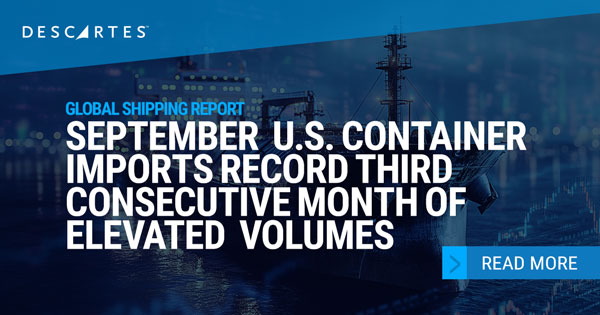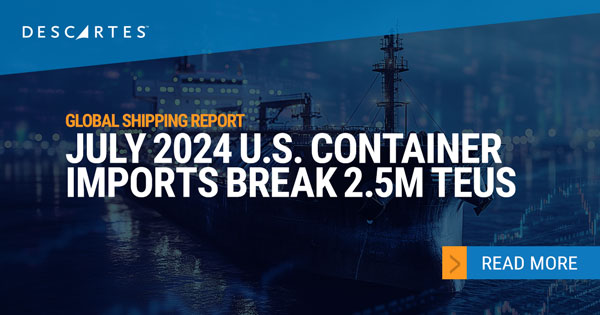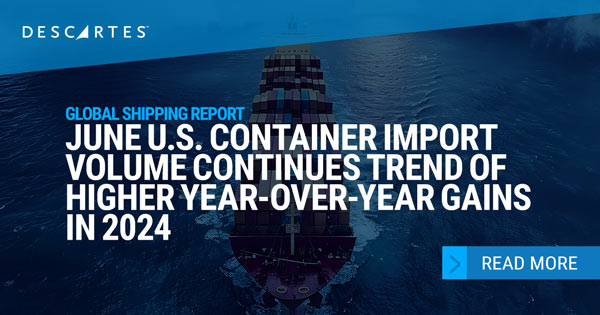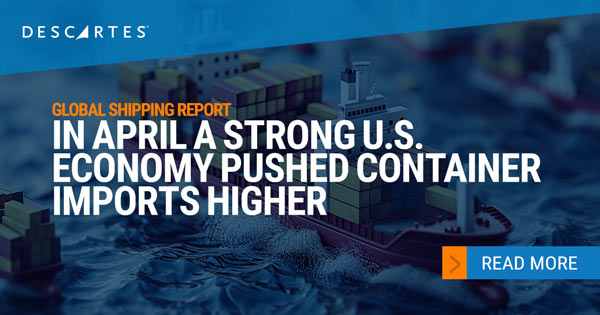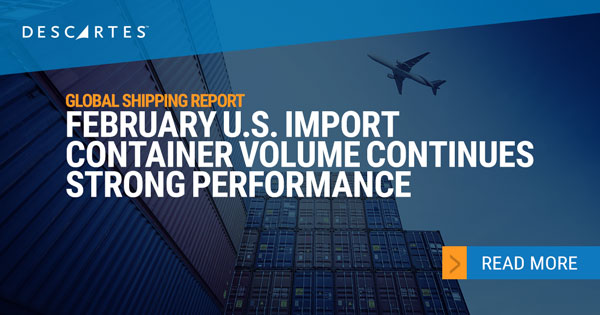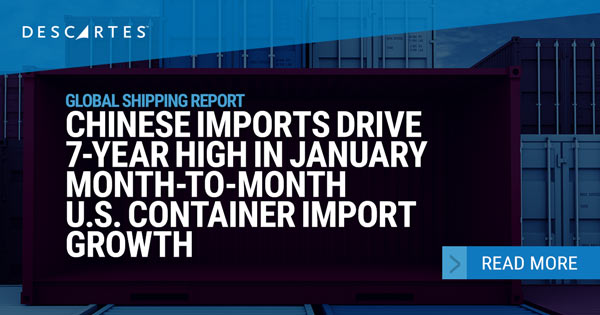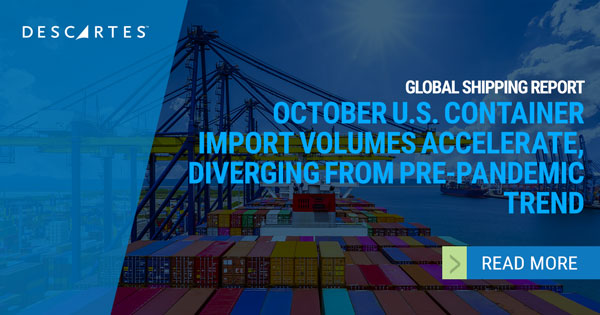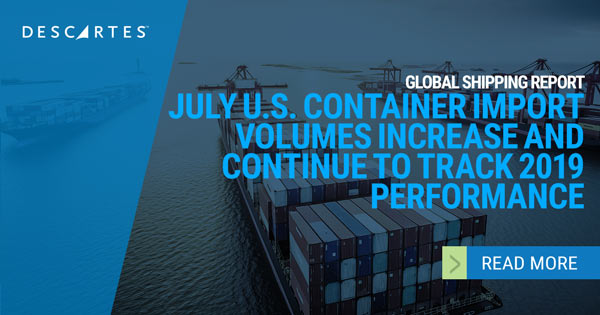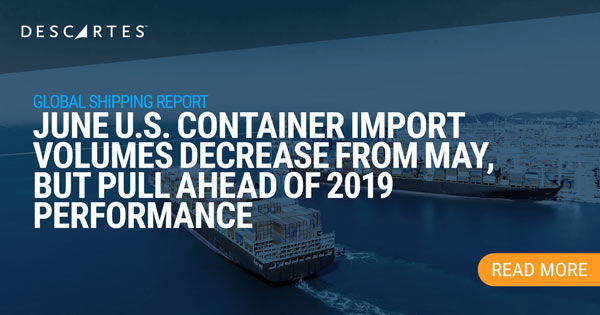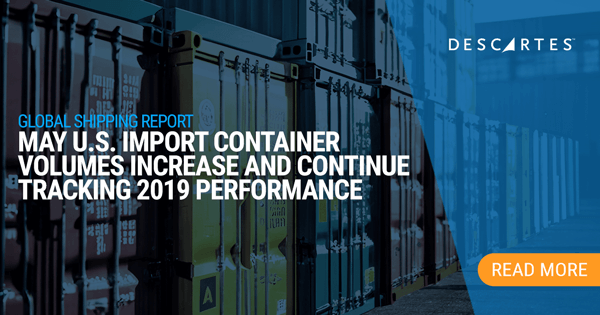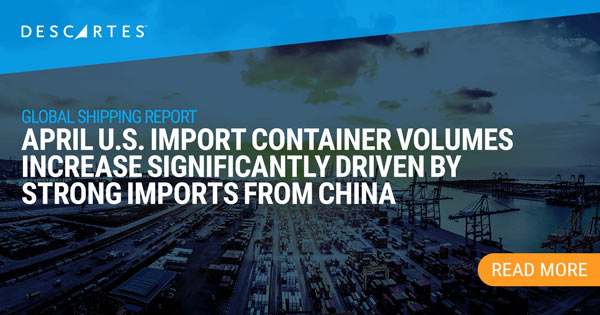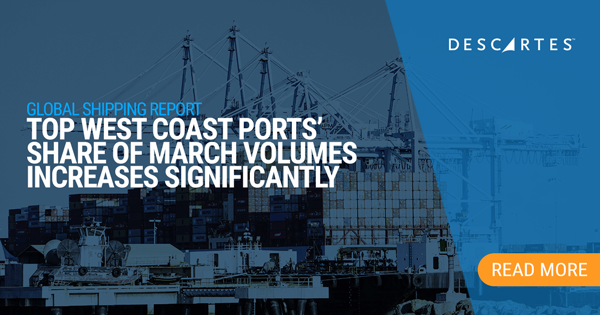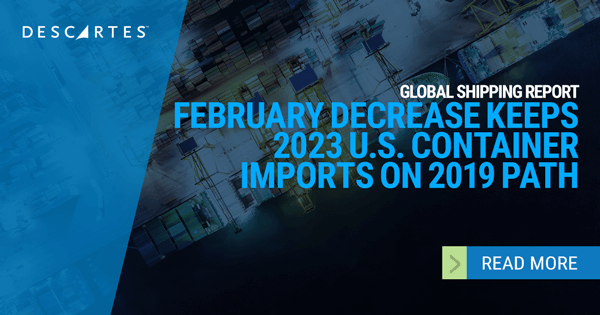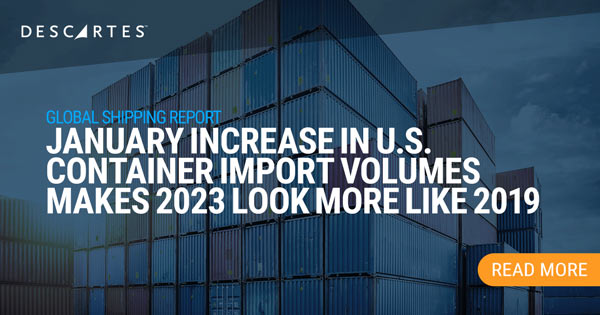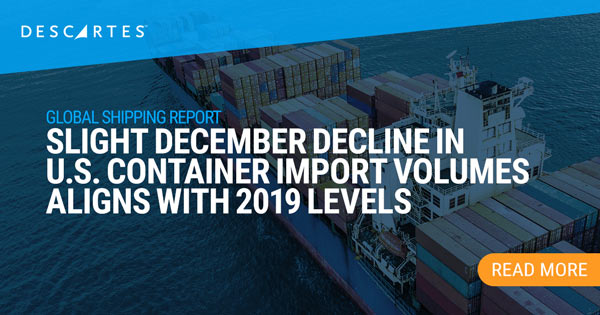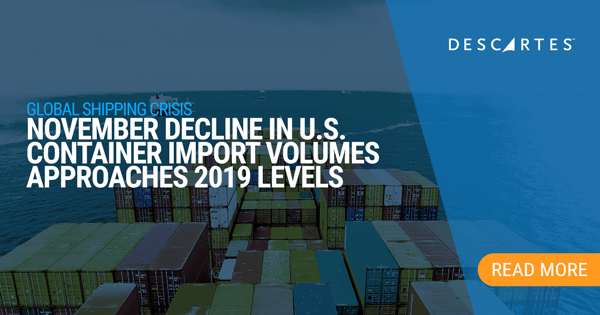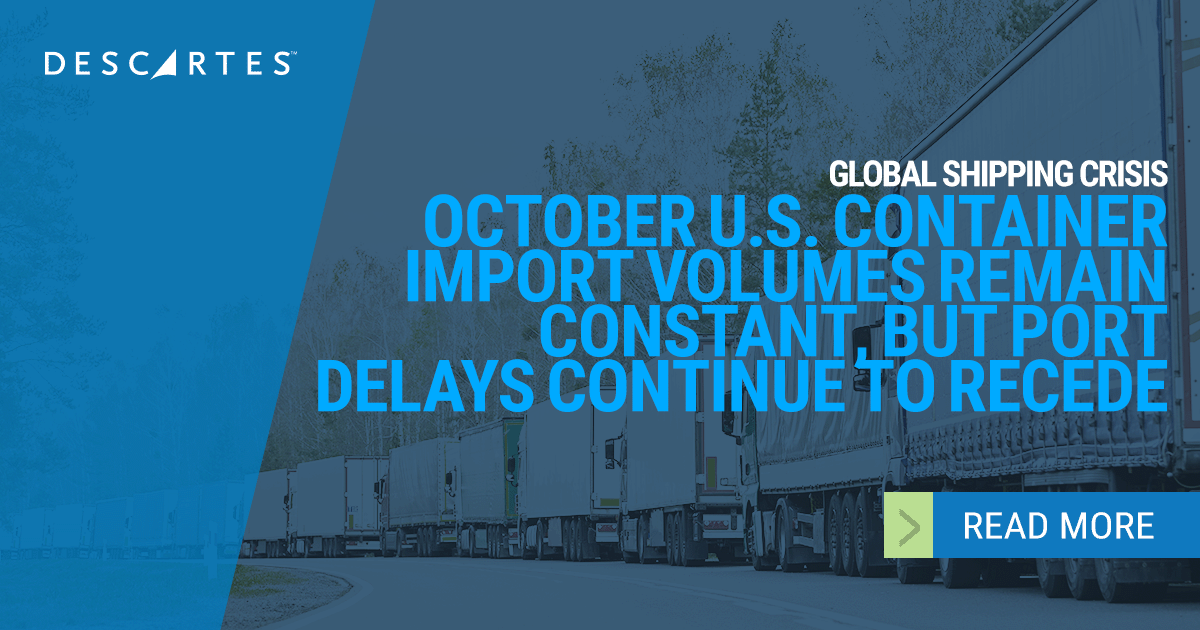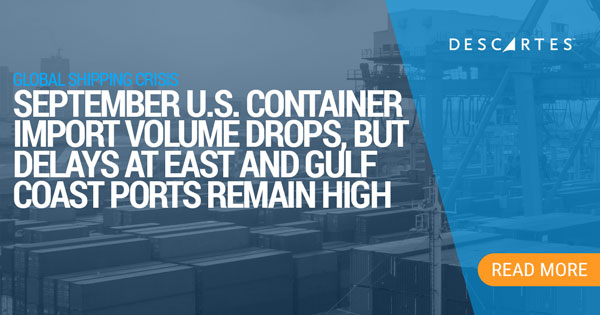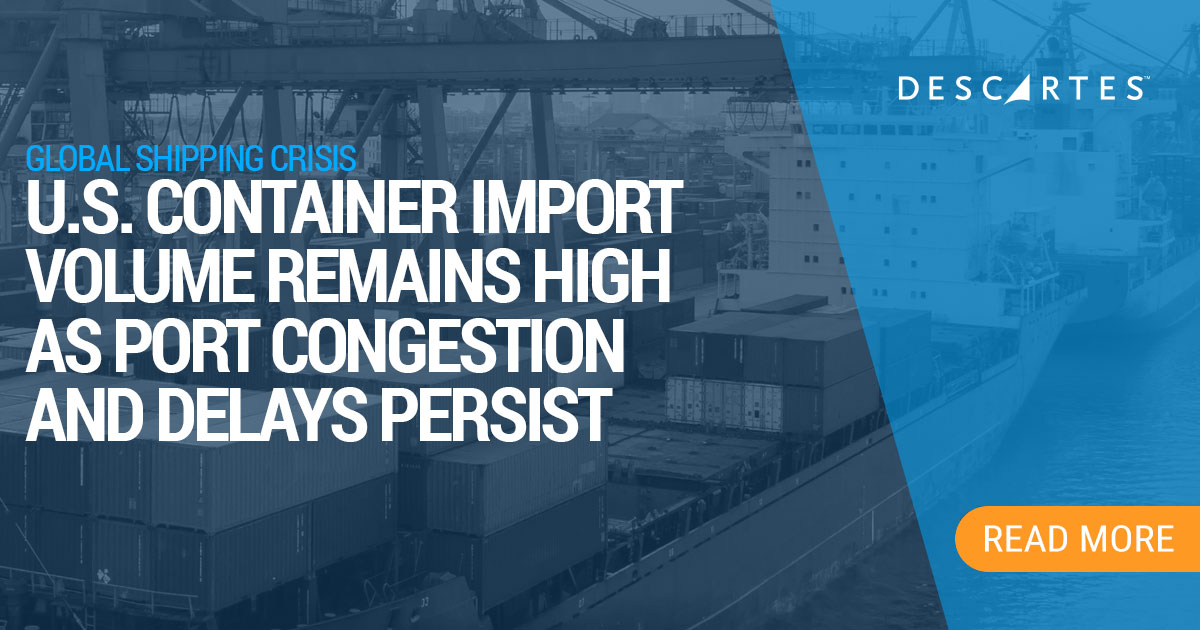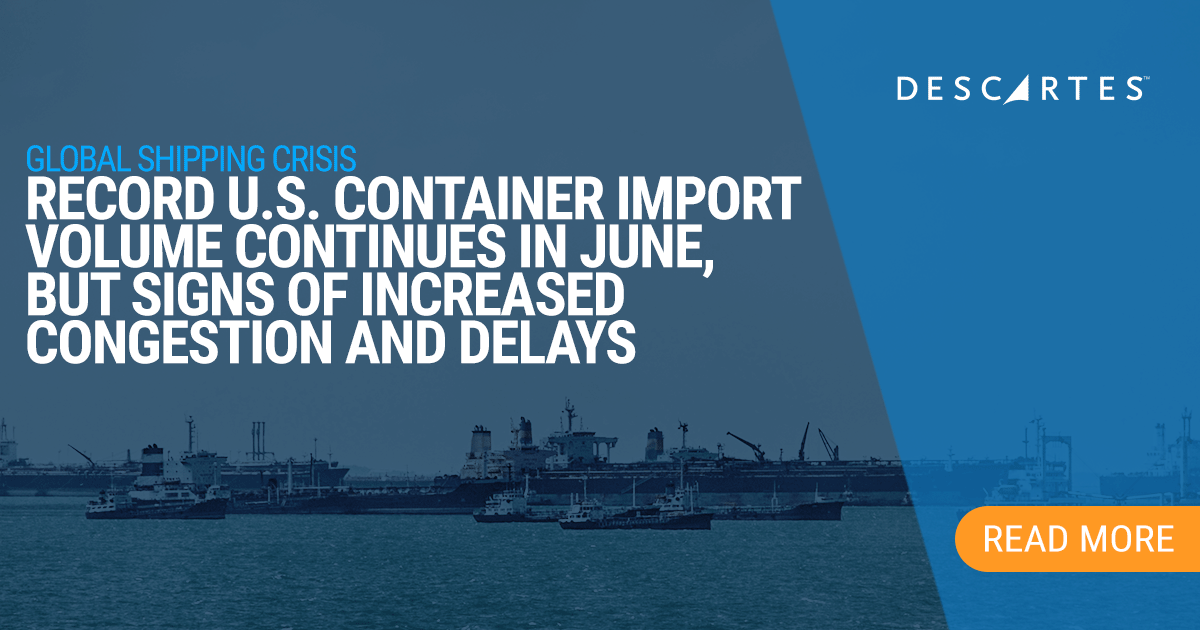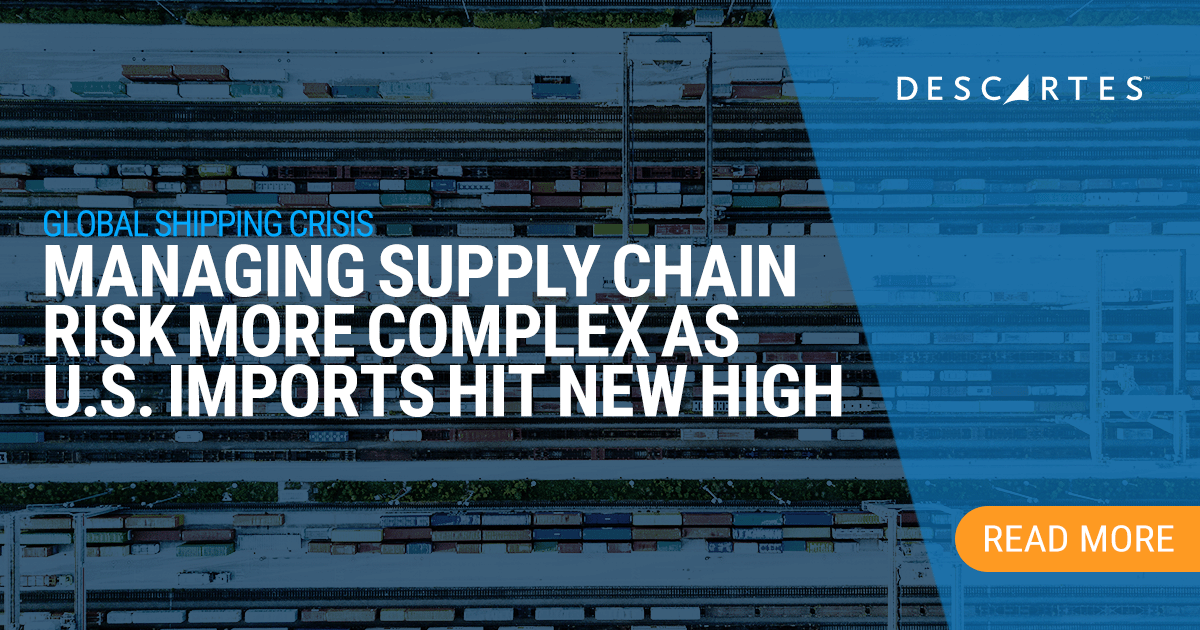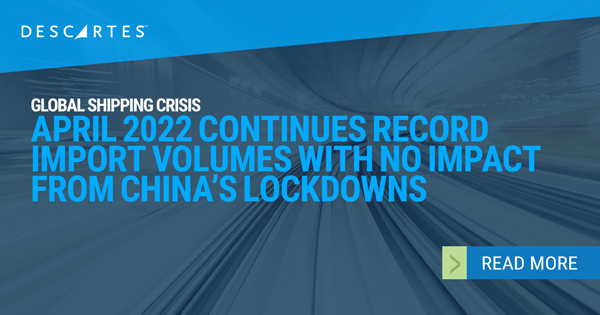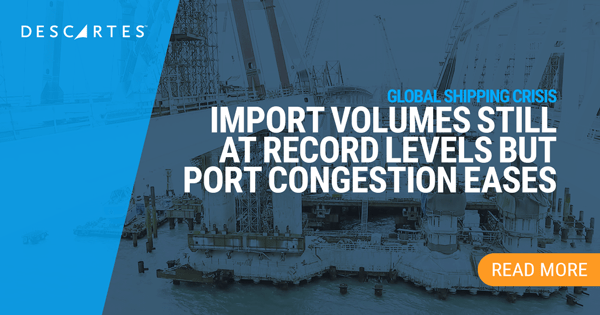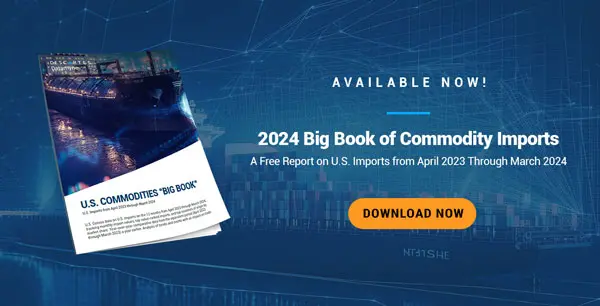The Global Shipping Resource Center
Monthly Global Trade Insights
Stay informed with the latest insights from the Descartes Global Shipping Report. Access current data on global trade trends and explore our archive of past reports to track changes and developments in global shipping patterns over time.
Trusted by




| Select year to toggle data./Month/In Millions | JAN | FEB | MAR | APR | MAY | JUN | JUL | AUG | SEP | OCT | NOV | DEC |
|---|---|---|---|---|---|---|---|---|---|---|---|---|
| 2019 | 2.51 | 2.34 | 2.61 | 2.58 | 2.73 | 2.69 | 2.54 | 2.20 | 2.31 | 2.23 | 1.95 | 1.73 |
| 2020 | 2.35 | 2.01 | 2.56 | 2.48 | 2.62 | 2.34 | 2.53 | 2.42 | 2.57 | 2.61 | 2.51 | 2.46 |
| 2021 | 2.13 | 1.75 | 1.68 | 1.83 | 1.75 | 1.82 | 2.15 | 2.31 | 2.26 | 2.43 | 2.27 | 2.31 |
| 2022 | 2.15 | 1.82 | 1.78 | 2.12 | 1.98 | 2.23 | 2.12 | 2.06 | 2.12 | 1.98 | 1.83 | 1.97 |
| 2023 | 2.13 | 1.84 | 1.93 | 2.04 | 2.12 | 2.23 | 2.15 | 2.32 | 2.36 | 2.13 | 2.24 | 2.28 |
| 2024 | 2.32 | 2.15 | 2.24 | 2.31 | 2.48 | 2.32 | 2.61 | 2.55 | 2.62 | 2.56 |
Source: Descartes Datamyne™
Archive

U.S. container import volumes continue to show robust growth in May 2024 compared to the same time last year, while port transit delays continue to improve across the board. Despite strong U.S. imports performance, the logistics metrics Descartes is tracking shows signs that global supply chain risks remain high due to Panama and Suez canal issues, labor negotiations, and geopolitical conflict. Read the article for more.

The Descartes January 2024 update of logistics metrics shows that in December 2023, U.S. import volume increased slightly from November, with regional variations and port delays at Gulf Coast ports. 2024 faces headwinds in the face of upcoming labor negotiations and persistent conditions at the Panama and Suez Canals.

U.S. container import volumes show a very modest increase in August 2023 compared to July, while port transit times remained close to their lowest levels since the pandemic. The September update of the logistics metrics Descartes is tracking shows signs that key challenges to the global supply chain have stabilized.
Special Reports
Media Coverage
Explore how major media outlets worldwide trust the Descartes Global Shipping Report for valuable maritime trade insights.

China Boosts U.S. Ocean Imports
Shipments from China boosted U.S. containerized imports above 2.4 million TEUs for the fourth straight month.

US Container Imports Stay Solid Heading Into Dockworkers Strike
US container imports stayed elevated in September near pandemic-era peaks, fueled by goods from China and worries about a strike by longshoremen, new figures showed.

Surge of Imports to US Continues as Possible East Coast Port Strike Looms
U.S. retailers rush in seasonal goods to mitigate ILA strike disruptions.

US retailers rush holiday imports, fearing strikes and disruptions
Retailers are fueling a summer rush of imports to the US this year, citing potential work strikes and ongoing shipping disruptions.

U.S. Container Imports Reach Record Levels in July
July container volumes into the U.S. were only surpassed by peak volumes during the pandemic surge in May and March 2022.

Singapore port congestion and Red Sea attacks
Congestion at Singapore's container port is at its worst since the COVID-19 pandemic

US Imports Drive Increased Market Trading
Rising US imports are driving increased activity in the US container trading market.

Late Lunar New Year Boosts February Cargo Volumes
February import volumes exceed expectations, elevated by China’s late break in manufacturing during the 2024 Lunar New Year.

Liner execs downplay Red Sea upside, punishing their own shares
Disruptions and the Panama Canal and in the Red Sea are dramatically increasing shipping distances.

Logistics Operators See a Shipping-Market Rebound
Demand is growing, and freight rates are rising in a sign retailers are restocking inventories again.

U.S. Container Imports Show Modest Increase to Close Out 2023
U.S. container import volume was up nearly 10% in December compared to the same month last year.

US holiday retailers importing like it is 2019
After a spending spree on goods that began during early COVID-19 lockdowns in 2020, U.S. consumer patterns are normalizing.

US West Coast ports gained market share in August after labor deal -report
U.S. West Coast ports, which reached a labor deal with their workers this summer, gained market share in August from the previous month, while their main rivals on the East Coast lost ground.

US West Coast ports regain lost volume as competitive pressure mounts
Some U.S. importers who shifted cargo away from West Coast ports to rival gateways over fears that labor contract talks could disrupt shipments have begun bringing some of that volume back.

Can U.S. West Coast ports get back lost TEU import volume market share?
Marketplace picks up on an analysis by Descartes which shows that significant TEU volume has shifted to East and Gulf Coast ports.

3 Ways Descartes’ Global Shipping Report Helps Companies Make Better Logistics Decisions
Chris Jones, EVP of Industry and Services for Descartes, explains the value of looking beyond one’s supply chain to better understand how commodities and freight flow.

Global Shipping Update: Modicum of Relief as Import Volumes Fall in Line with 2019 Levels
With the second quarter of 2023 on the horizon, importers and logistics service providers (LSPs) are wondering what lies ahead.

U.S. imports of containerized goods retreat to pre-pandemic level
U.S. imports of goods in ocean shipping containers in December fell to levels approaching those last seen before the COVID-19 pandemic, a new report said on Tuesday.

Imports Into Southern California’s Ports Plunged 26% in October
Port of Los Angeles executive director says protracted contract negotiations are pushing importers to Gulf and East Coast gateways.

Freight Operators’ Peak Shipping Season Is Crumbling
With retailers overstocked and shipping demand receding, clouds are gathering over U.S. supply chains just as demand should be growing.

US imports sink in September, suffer steepest drop since 2020 lockdowns
Demand for Asian goods began dropping earlier this year. This is now having a delayed — and highly negative — effect on U.S. imports.

Why the Global Shipping Crisis Isn’t Going Away Anytime Soon
Supply chain issues continue to plague the industry, while persistent inflation and conflict abroad could create additional market chaos. Here's what it means for distributors.

Global Shipping Woes: The Saga Continues
As 2022 unfolds, the pandemic-driven supply chain crunch is showing little sign of relenting.

Global Shipping Crisis: No Quick Fix
With spring only a short time away, the shipping and logistics crisis continues to wreak havoc throughout the global supply chain.



